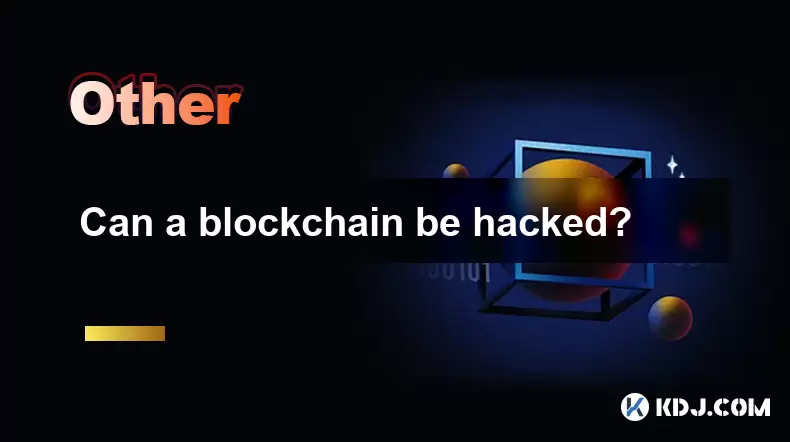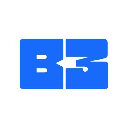-
 Bitcoin
Bitcoin $115000
0.12% -
 Ethereum
Ethereum $3701
4.50% -
 XRP
XRP $3.081
2.99% -
 Tether USDt
Tether USDt $0.0000
-0.01% -
 BNB
BNB $767.9
1.45% -
 Solana
Solana $169.5
3.13% -
 USDC
USDC $0.9999
0.01% -
 Dogecoin
Dogecoin $0.2106
4.30% -
 TRON
TRON $0.3334
1.62% -
 Cardano
Cardano $0.7564
2.54% -
 Stellar
Stellar $0.4165
0.76% -
 Hyperliquid
Hyperliquid $38.75
0.25% -
 Sui
Sui $3.593
3.00% -
 Chainlink
Chainlink $17.08
3.59% -
 Bitcoin Cash
Bitcoin Cash $573.6
4.35% -
 Hedera
Hedera $0.2508
-0.84% -
 Avalanche
Avalanche $23.07
6.46% -
 Ethena USDe
Ethena USDe $1.001
-0.02% -
 Litecoin
Litecoin $120.8
8.17% -
 UNUS SED LEO
UNUS SED LEO $8.943
-0.32% -
 Toncoin
Toncoin $3.400
-5.60% -
 Shiba Inu
Shiba Inu $0.00001255
1.54% -
 Uniswap
Uniswap $9.908
6.32% -
 Polkadot
Polkadot $3.718
2.10% -
 Monero
Monero $303.0
-0.74% -
 Dai
Dai $0.9999
-0.02% -
 Bitget Token
Bitget Token $4.392
0.91% -
 Cronos
Cronos $0.1403
6.31% -
 Pepe
Pepe $0.00001076
1.13% -
 Aave
Aave $267.2
1.80%
how does blockchain technology work
Blockchain's decentralized and immutable nature provides a verifiable and secure mechanism for recording transactions, ensuring data integrity and reducing the reliance on intermediaries.
Oct 14, 2024 at 10:30 am

Understanding the Intricate Workings of Blockchain Technology
1. Introduction to Blockchain
- Blockchain is a decentralized, distributed ledger technology that records transactions in a verifiable and permanent manner.
- It is a tamper-proof and secure network that facilitates direct transactions between parties without the need for intermediaries.
2. Key Components of Blockchain
- Block: A digital container that holds a set of transaction records and other relevant information.
- Node: A participant in the blockchain network responsible for maintaining and verifying the integrity of the data.
- Ledger: A comprehensive record of all transactions performed on the blockchain, providing transparency and accountability.
- Consensus Mechanism: A protocol used by nodes to reach agreement on the validity of transactions and the addition of new blocks to the chain.
3. How Blockchain Works
- Transaction Initiation: A user initiates a transaction by submitting it to the blockchain network.
- Verification and Validation: Nodes in the network verify the transaction's validity and check for potential fraud or errors.
- Block Creation: Once verified, the transaction is grouped into a block along with other pending transactions.
- Consensus: Nodes use a consensus mechanism to reach a consensus on the validity of the block.
- Block Addition: The agreed-upon block is added to the ledger, creating an immutable record of the transactions.
4. Characteristics of Blockchain
- Decentralization: No single entity controls the blockchain; it is maintained by a network of nodes.
- Immutability: Once added to the ledger, transactions cannot be altered or removed, ensuring data integrity.
- Transparency: All transactions are recorded on a public ledger, visible to all participants in the network.
- Security: Advanced encryption and consensus mechanisms make blockchain resistant to tampering and malicious attacks.
5. Applications of Blockchain
Blockchain technology has numerous potential applications across various industries, including:
- Finance: Cryptocurrency transactions, digital asset management, and supply chain management.
- Healthcare: Patient record management, drug traceability, and clinical trial data sharing.
- Government: Digital voting, land registry, and identity management.
- Entertainment: Digital content distribution, copyright protection, and fan engagement.
6. Conclusion
Blockchain technology offers a unique solution to the challenges of data security, transparency, and efficiency. Its decentralized, immutable, and secure nature has made it a promising platform for a wide range of applications, revolutionizing the way we interact with information and transact business.
Disclaimer:info@kdj.com
The information provided is not trading advice. kdj.com does not assume any responsibility for any investments made based on the information provided in this article. Cryptocurrencies are highly volatile and it is highly recommended that you invest with caution after thorough research!
If you believe that the content used on this website infringes your copyright, please contact us immediately (info@kdj.com) and we will delete it promptly.
- Velo Universe, DEX, and DeFi Security: Navigating the Future of Decentralized Trading
- 2025-08-05 09:25:13
- Bitget Wallet Revolutionizes Solana with Gas-Free Transactions: A New Era for DeFi
- 2025-08-05 09:25:13
- Ozak AI, Crypto Boom, and ROI Potential: Is This the Next Big Thing?
- 2025-08-05 09:25:24
- Solana's ETF Hopes & the All-Time High Chase: Is SOL Set to Soar?
- 2025-08-05 09:25:24
- Coinbase's Brian Armstrong and the Art of Focused Work: A Deep Dive
- 2025-08-05 09:25:30
- Uniswap Price Prediction: Bullish Reversal on the Horizon?
- 2025-08-05 09:25:30
Related knowledge

What is the purpose of a nonce in mining?
Aug 04,2025 at 05:56pm
Understanding the Role of a Nonce in Cryptocurrency MiningIn the world of cryptocurrency mining, the term nonce stands for 'number used only once.' Th...

Can data on a blockchain be deleted?
Aug 05,2025 at 04:00am
Understanding Blockchain ImmutabilityThe core principle behind most blockchain systems is immutability, which means that once data is recorded onto th...

What is the difference between on-chain and off-chain transactions?
Aug 02,2025 at 04:22pm
Understanding On-Chain TransactionsOn-chain transactions refer to digital asset transfers that are recorded directly on a blockchain ledger. These tra...

How are blocks linked together?
Aug 04,2025 at 06:56am
Understanding the Structure of a BlockchainA blockchain is a decentralized digital ledger composed of a sequence of blocks, each containing a list of ...

Can a blockchain be hacked?
Aug 05,2025 at 08:29am
Understanding Blockchain Architecture and Security PrinciplesBlockchain technology is built on a decentralized and distributed ledger system that reco...

What is a node's role in a blockchain network?
Aug 03,2025 at 03:16pm
Understanding the Function of a Node in a Blockchain NetworkA node is a fundamental component of any blockchain network, acting as a participant that ...

What is the purpose of a nonce in mining?
Aug 04,2025 at 05:56pm
Understanding the Role of a Nonce in Cryptocurrency MiningIn the world of cryptocurrency mining, the term nonce stands for 'number used only once.' Th...

Can data on a blockchain be deleted?
Aug 05,2025 at 04:00am
Understanding Blockchain ImmutabilityThe core principle behind most blockchain systems is immutability, which means that once data is recorded onto th...

What is the difference between on-chain and off-chain transactions?
Aug 02,2025 at 04:22pm
Understanding On-Chain TransactionsOn-chain transactions refer to digital asset transfers that are recorded directly on a blockchain ledger. These tra...

How are blocks linked together?
Aug 04,2025 at 06:56am
Understanding the Structure of a BlockchainA blockchain is a decentralized digital ledger composed of a sequence of blocks, each containing a list of ...

Can a blockchain be hacked?
Aug 05,2025 at 08:29am
Understanding Blockchain Architecture and Security PrinciplesBlockchain technology is built on a decentralized and distributed ledger system that reco...

What is a node's role in a blockchain network?
Aug 03,2025 at 03:16pm
Understanding the Function of a Node in a Blockchain NetworkA node is a fundamental component of any blockchain network, acting as a participant that ...
See all articles

























































































